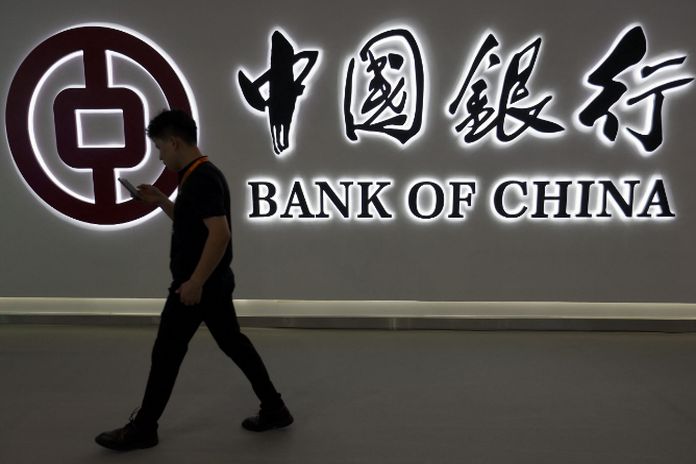By Shahar Hameiri
The fiscal after-effects of the pandemic have combined with global interest rate rises to create a new developing-world debt crisis – one where China’s role as creditor has come under intense scrutiny. But the Chinese approach to negotiations with sovereign debtors has done less to validate concerns that Beijing’s using debt as an instrument of geopolitical competition, than it has to showcase how China’s complicated domestic political economy produces incoherent responses to international policy challenges.
Since the early 2000s, China’s gone from a relatively insignificant donor to the biggest bilateral provider of development financing as the Belt and Road Initiative (BRI) saw its global lending portfolio expand rapidly to temporarily rival the World Bank’s. China also shifted from delivering the bulk of its international financing as aid in the form of grants and concessional loans to providing mainly commercial-rate loans, often for infrastructure megaprojects constructed by Chinese state-owned enterprises.
Many attribute geopolitical motives to China’s expanding overseas lending – specifically the BRI – arguing that Beijing deploys development financing to cultivate allies and secure access to strategically valuable trade routes, locations and resources – using so-called ‘debt-trap diplomacy’.
If that were true, one would have expected China to do one of two things in response to the growing sovereign debt crisis: provide generous debt restructuring terms to distressed borrowers to secure their followership, or spring its debt trap, exploiting debtors’ vulnerability to seize strategic assets or coerce other concessions.
But neither is happening.
Instead, Chinese creditors are insisting on being repaid in full and appear unwilling to offer meaningful concessions, resulting in prolonged debt restructuring negotiations that in many cases have reached a stalemate.
China’s standing in many developing countries is eroding as its hardball negotiating tactics cause political headaches for local elites. Meanwhile, Chinese emergency lending to distressed sovereign borrowers has grown in response to the current crisis, such that rescue loans now account for almost 60 percent of BRI funding. Some suggest that this shows China’s intentions to compete with the IMF as international lender-of-last-resort, but China’s rescue loans in fact aim to protect Chinese lenders. They are overwhelmingly renminbi-denominated and offered on a short-term basis at high-interest rates, which insulates Chinese banks from default risks in the near term while doing borrowers no favours by partly replacing their existing debt pile with more expensive debt.
So far, Chinese engagement in sovereign debt restructuring does not seem to follow any reasonable interpretation of China’s geostrategic interests – but it does bear the signs of the fragmented and decentralised nature of policymaking in China that is now spilling on to the world stage.
As China’s economy has globalised, many domestically focused agencies at multiple levels have internationalised. Central ministries, provincial governments, state-owned enterprises, regulators, banks and law enforcement agencies now operate across borders regularly with varying degrees of coordination and control from the centre. As a result, China’s international engagements are often incoherent or even downright contradictory.
These dynamics play out in international development financing. China’s mammoth policy banks, the Export–Import Bank of China (Exim Bank) and the China Development Bank (CDB), are responsible for nearly all of China’s non-concessional sovereign loans, which make up the vast bulk of its overseas lending.
Aside from a small contribution from the finance ministry to subsidise Exim bank’s concessional loans, which constitute a minor part of its portfolio, the policy banks are not funded through fiscal means. Rather they issue bonds that receive implicit sovereign guarantee from the Chinese government. These bonds are purchased mainly by China’s state-owned commercial banks to meet their capital requirements.
Since Chinese household savings are largely channelled into commercial banks for low returns, this provides a mechanism for funnelling household savings into supporting the state sector’s ventures. The policy banks receive infrequent injections of hard currency from China’s vast reserves. The aim is to diversify China’s reserves’ investment and generate better returns than those derived from traditional reserve investments like US Treasury bonds.
Although this model provides China’s policy banks with an enormous capacity to lend that its Western competitors cannot match, it means that policy banks are widely seen as responsible for managing their own books and held responsible by others within the Chinese party-state when something goes wrong. To write off bad loans, bank officials have to risk career suicide by approaching China’s State Council for case-by-case approval.
When problems with debtors emerge, policy banks are therefore highly resistant to cutting interest rates or writing off loans. Since they deal directly with debtor countries and other creditors, this effectively becomes China’s official negotiating position.
Further rendering Chinese creditors’ position inflexible is the concern about being taken advantage of by other creditors. Whereas multilateral development banks (MDBs) are excluded from restructuring negotiations to protect their AAA credit ratings, Chinese lenders are exposed to the zero-sum game inherent in those negotiations wherein if one creditor accepts a big ‘haircut’, the debtor can use this to repay more to another creditor who takes a smaller one.
Chinese officials have insisted that MDBs also carry a share of the restructuring burden, but have met resistance to this idea from Paris Club governments, MDBs and even from some debtor governments. China’s position in debt restructuring negotiations is shaped primarily by the financial interests of its lenders – notably the big policy banks – rather than geopolitical opportunism.
Domestic processes in China must change to allow banks to write down bad debt more easily. Traditional donor governments, notably the United States, must agree to include MDBs in debt restructuring and pressure bondholders to accept their fair share of debt relief.
If not, the sovereign debt restructuring stalemate will endure to the detriment of debt-distressed countries and their societies.
- Shahar Hameiri is Professor of International Politics and Australian Research Council Future Fellow in the School of Political Science and International Studies, University of Queensland. This article is based on research conducted jointly with Professor Lee Jones.





